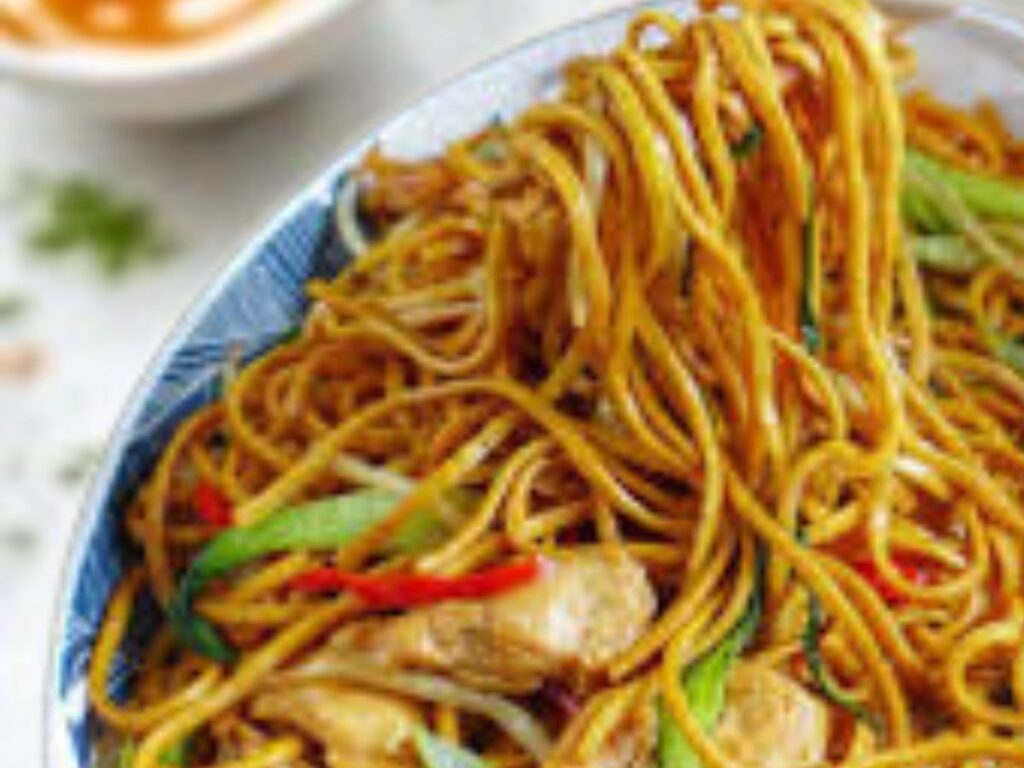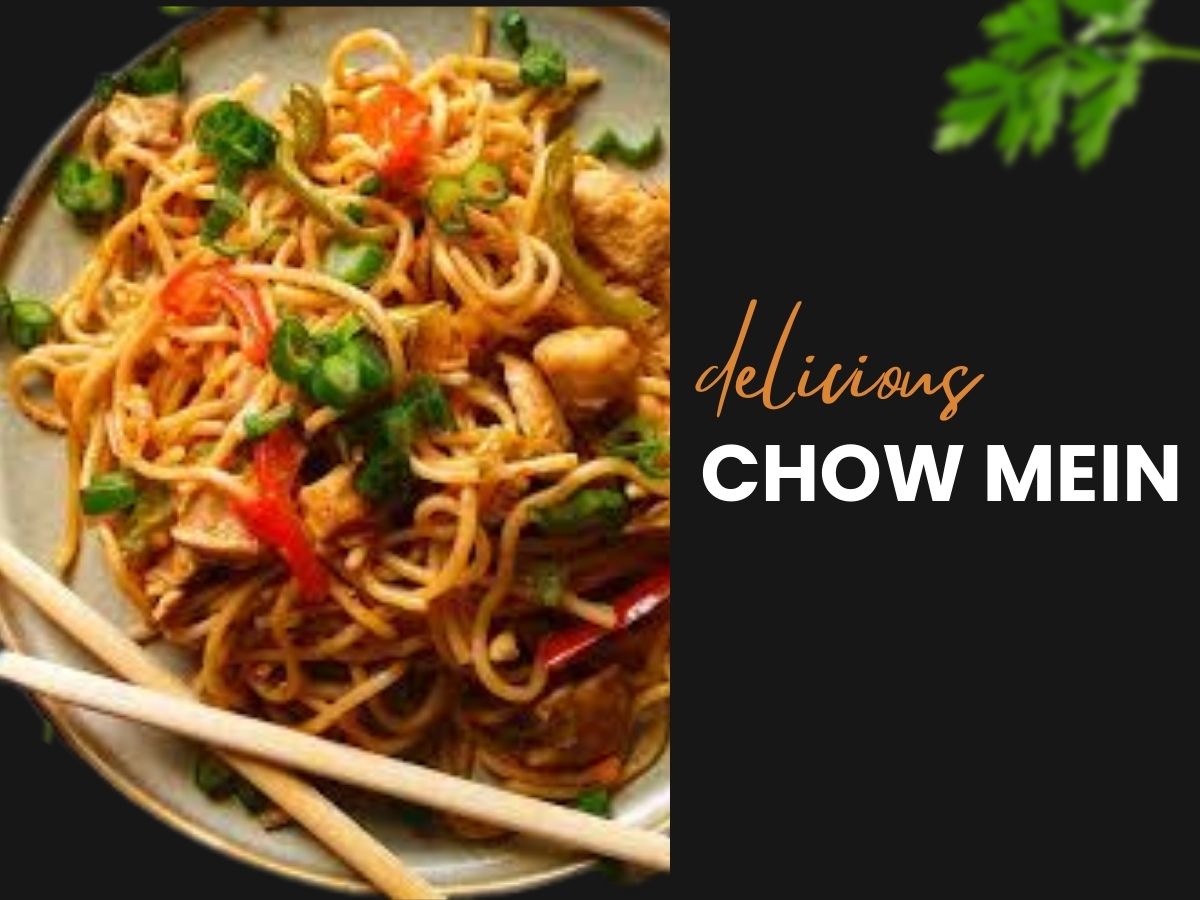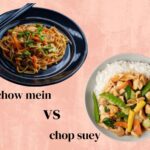Chow mein is one of the most beloved and recognizable dishes in Chinese-American cuisine, featuring perfectly stir-fried noodles tossed with fresh vegetables and your choice of protein. This versatile dish has won hearts worldwide with its satisfying combination of tender noodles, crisp vegetables, and savory flavors that come together in perfect harmony.
Whether you’re craving takeout or want to master this classic dish at home, understanding the art of making authentic chow mein will transform your cooking skills and give you a go-to recipe that’s both delicious and adaptable. From the signature stir-fried texture to the perfect balance of sauces, this comprehensive guide will teach you everything you need to know about creating restaurant-quality chow mein in your own kitchen.
The beauty of chow mein lies in its flexibility – you can customize it with different proteins, vegetables, and seasonings to suit your taste preferences and dietary needs. Let’s dive into the world of this iconic dish and discover how to make the perfect chow mein that rivals your favorite Chinese restaurant.
Recipe Overview
| Prep Time | 20 min |
| Cook Time | 15 min |
| Total Time | 35 min |
| Serving Size | 4-6 people |
| Difficulty Level | Medium |
| Cuisine | Chinese-American |
Essential Chow Mein Ingredients
For the Noodles:
- 1 pound fresh chow mein noodles (or 12 oz dried Chinese egg noodles)
- 2 tablespoons vegetable oil for cooking noodles
- 1 teaspoon sesame oil
Main Ingredients:
- 1 pound protein of choice (chicken breast, beef, pork, or shrimp)
- 3 cups mixed vegetables (see vegetable list below)
- 3 tablespoons cooking oil
- 2 cloves garlic, minced
- 1 tablespoon fresh ginger, minced
Chow Mein Sauce:
- 1/4 cup soy sauce (low sodium preferred)
- 2 tablespoons oyster sauce
- 1 tablespoon dark soy sauce (for color)
- 1 teaspoon sugar
- 1/2 teaspoon white pepper
- 1 tablespoon cornstarch
- 2 tablespoons water
Vegetable Options:
- 1 cup cabbage, shredded
- 1 bell pepper, sliced thin
- 1 medium carrot, julienned
- 1/2 cup onion, sliced
- 1 cup bean sprouts
- 2 green onions, chopped
Step-by-Step Chow Mein Procedure
Step 1: Prepare the Sauce
- In a small bowl, whisk together soy sauce, oyster sauce, dark soy sauce, sugar, and white pepper
- In a separate small bowl, mix cornstarch with water to create a slurry
- Combine both mixtures and set aside
Step 2: Prepare the Noodles
- If using dried noodles, cook according to package directions until just tender
- If using fresh chow mein noodles, blanch in boiling water for 2-3 minutes
- Drain thoroughly and toss with sesame oil to prevent sticking
- Set aside on a large plate or tray
Step 3: Prepare Ingredients
- Cut protein into bite-sized pieces or thin strips
- Prepare all vegetables by washing, cutting, and arranging in order of cooking time
- Have all ingredients ready before starting to cook
Step 4: Cook the Protein
- Heat 1 tablespoon oil in a large wok or skillet over high heat
- Add protein and stir-fry until cooked through (3-5 minutes depending on protein)
- Remove protein from pan and set aside
Step 5: Stir-Fry Vegetables
- Add another tablespoon of oil to the same wok
- Add garlic and ginger, stir-fry for 30 seconds until fragrant
- Add harder vegetables first (carrots, onions), cook for 2 minutes
- Add softer vegetables (bell peppers, cabbage), cook for another 2 minutes
- Add bean sprouts last, cook for 1 minute
Step 6: Combine Everything
- Push vegetables to one side of the wok
- Add remaining oil to empty side and heat for 30 seconds
- Add prepared noodles to the oil side and toss
- Gradually mix noodles with vegetables
- Return cooked protein to the wok
Step 7: Final Seasoning
- Pour the prepared sauce over everything
- Toss constantly for 2-3 minutes until sauce coats all ingredients
- Cook until noodles are heated through and slightly crispy in places
- Garnish with chopped green onions
Step 8: Serve Immediately
Serve hot directly from the wok onto warmed plates for the best taste and texture.

Preparation and Serving Guide
Preparation Tips:
- Mise en place: Have all ingredients prepped before starting to cook
- Room temperature protein: Let protein sit out for 15 minutes before cooking
- Dry noodles: Pat cooked noodles dry to prevent oil splashing
- Sharp knife: Use a sharp knife for even vegetable cuts
Serving Suggestions:
- Individual portions: Serve 1.5-2 cups per person as a main dish
- Family style: Present in a large serving bowl with serving spoons
- Garnishes: Top with sesame seeds, cilantro, or sliced chilies
- Side dishes: Pair with egg rolls, dumplings, or hot and sour soup
Nutritional Guide
| Calories | 385 kcal |
| Protein | 28 g |
| Carbohydrates | 42 g |
| Fat | 12 g |
| Fiber | 4 g |
| Sugar | 8 g |
| Sodium | 890 mg |
| *Per Serving (based on 6 servings with chicken) |
Health Benefits:
- High protein: Supports muscle health and satiety
- Vegetables: Provide vitamins, minerals, and fiber
- Complex carbohydrates: Sustained energy from noodles
- Iron: From dark soy sauce and protein sources
Making It Healthier:
- Use whole wheat noodles for more fiber
- Add extra vegetables to increase nutrient density
- Use less oil during cooking
- Choose lean proteins like chicken breast or tofu
- Reduce sodium by using low-sodium soy sauce
Temperature and Storage Guide
Cooking Temperatures:
- Wok temperature: Very hot, around 400-450°F (200-230°C)
- Internal protein temp: 165°F (74°C) for chicken, 145°F (63°C) for beef
- Serving temperature: Serve immediately while hot
Storage Guidelines:
- Refrigerator: Store in airtight containers for up to 3 days
- Freezer: Can freeze for up to 2 months (texture may change)
- Reheating: Best reheated in a wok or large skillet over medium-high heat
- Add liquid: Add a splash of broth or water when reheating to prevent drying
Food Safety:
- Cool quickly: Refrigerate within 2 hours of cooking
- Reheat thoroughly: Heat to 165°F (74°C) when reheating
- Don’t refreeze: Once thawed, consume within 24 hours
Professional Tips and Tricks
Noodle Tips:
- Don’t overcook: Noodles should be just tender, not mushy
- Oil coating: Toss cooked noodles with oil to prevent clumping
- High heat: Use the highest heat your stove allows for authentic texture
- Work quickly: Move fast once you start stir-frying
Vegetable Tips:
- Cut uniformly: Same-sized pieces cook evenly
- Cook order: Add vegetables based on cooking time needed
- Keep it crisp: Vegetables should retain some crunch
- Don’t overcrowd: Cook in batches if necessary
Sauce Tips:
- Balance flavors: Taste and adjust salt, sweet, and umami
- Cornstarch slurry: Prevents lumpy sauce
- Add gradually: Pour sauce around edges of wok for even distribution
- Fresh herbs: Add delicate herbs at the very end
Wok Technique:
- Preheat properly: Let wok get smoking hot before adding oil
- Constant motion: Keep ingredients moving to prevent burning
- Use a wok spatula: Proper tools make stirring easier
- Work in sections: Don’t try to stir everything at once
Alternative Chow Mein Recipes
Beef Chow Mein
Replace chicken with thinly sliced beef (sirloin or flank steak works best). Marinate beef in 1 tablespoon soy sauce and 1 teaspoon cornstarch for 15 minutes before cooking.
Shrimp Chow Mein
Use 1 pound large shrimp, peeled and deveined. Cook shrimp for just 2-3 minutes until pink. Add a squeeze of fresh lemon juice before serving.
Vegetarian Chow Mein
Replace protein with:
- Extra firm tofu, cubed and pan-fried until golden
- Mixed mushrooms (shiitake, button, cremini)
- Additional vegetables like broccoli, snap peas, or zucchini
Mince Chow Mein (Ground Meat Version)
Use 1 pound ground pork, beef, or chicken instead of chunks. Cook mince until browned and crumbly, breaking it up as it cooks.
Spicy Szechuan Chow Mein
Add these ingredients to the basic recipe:
- 1 tablespoon chili garlic sauce
- 1 teaspoon Szechuan peppercorns, crushed
- 2-3 dried red chilies, chopped
- Extra ginger and garlic
Cantonese-Style Chow Mein
For a more authentic version:
- Use only light soy sauce (no dark soy sauce)
- Add 1 tablespoon Shaoxing wine
- Include Chinese chives instead of green onions
- Use minimal vegetables to focus on noodle texture
Alternative Cooking Techniques
Crispy Chow Mein Method
- After cooking noodles, spread them on a baking sheet
- Bake at 400°F for 10-15 minutes until edges are crispy
- Top with the stir-fried vegetable and protein mixture
- Serve immediately for contrasting textures
Two-Pan Method
- Use one pan for protein and vegetables
- Use a separate pan to crisp the noodles
- Combine both at the end with sauce
- This method gives better control over individual components
Oven-Finished Chow Mein
- Prepare everything in a wok as usual
- Transfer to a large oven-safe dish
- Finish in a 425°F oven for 5-10 minutes
- This method works well for large batches
Packet Method (Using Chow Mein Packet Seasonings)
If using store-bought chow mein packets:
- Follow package directions for seasoning amounts
- Enhance with fresh garlic, ginger, and vegetables
- Add extra soy sauce and sesame oil for depth
- Don’t rely solely on packet seasoning – supplement with fresh ingredients
Understanding Chow Mein vs Lo Mein
Key Differences:
Chow Mein:
- Noodles are stir-fried and often crispy
- Less sauce, more concentrated flavors
- “Chow” means stir-fried in Chinese
- Drier texture overall
Lo Mein:
- Noodles are boiled and tossed with sauce
- More sauce, softer noodle texture
- “Lo” means tossed or stirred in Chinese
- Wetter, saucier consistency
Which Should You Choose?
Choose chow mein if you prefer:
- Crispy or chewy noodle texture
- Less saucy dishes
- More concentrated flavors
- Traditional stir-fried taste
Frequently Asked Questions
What is the difference between lo mein and chow mein?
The main difference is in preparation: chow mein noodles are stir-fried to create texture and sometimes crispiness, while lo mein noodles are boiled and then tossed with sauce. Chow mein has a drier texture with more concentrated flavors, while lo mein is saucier and softer.
What is chow mein made of?
Chow mein is made of stir-fried Chinese egg noodles combined with vegetables, protein (chicken, beef, pork, or shrimp), and a savory sauce typically containing soy sauce, oyster sauce, and seasonings. The dish gets its distinctive flavor from high-heat cooking that slightly crisps the noodles.
What is chow mein Panda Express?
Panda Express chow mein is their version of this classic dish, featuring soft chow mein noodles stir-fried with cabbage, celery, and onions in a savory soy-based sauce. It’s designed as a side dish and is milder than traditional restaurant chow mein, with a focus on the noodles rather than protein.
Is chow mein a junk food?
Chow mein isn’t inherently junk food, but it can be high in sodium and calories depending on preparation. Homemade versions with fresh vegetables, lean protein, and controlled oil amounts can be quite nutritious. Restaurant versions may be higher in sodium and oil, but it’s still a balanced dish with protein, vegetables, and carbohydrates.
Can I use regular pasta instead of chow mein noodles?
While traditional chow mein noodles work best, you can substitute with fresh linguine, spaghetti, or ramen noodles in a pinch. The texture won’t be exactly the same, but the dish will still be delicious. Avoid using dried pasta that’s too thick or has a rough texture.
How do I prevent my noodles from sticking together?
To prevent sticking, toss cooked noodles immediately with a small amount of sesame oil or vegetable oil. Make sure noodles are well-drained and spread them out on a large plate or tray while you prepare other ingredients.
Can I make chow mein ahead of time?
Chow mein is best served immediately, but you can prep ingredients ahead of time. Cook and oil the noodles, prepare vegetables, and make the sauce up to a day in advance. Store separately and combine when ready to stir-fry.
What’s the best oil for making chow mein?
Use oils with high smoke points like vegetable oil, peanut oil, or canola oil for stir-frying. Finish with a small amount of sesame oil for flavor, but don’t cook with sesame oil as it burns easily at high temperatures.
Conclusion
Mastering the art of homemade chow mein opens up a world of delicious possibilities in your kitchen. This versatile dish combines the satisfying chew of perfectly cooked noodles with fresh vegetables and your choice of protein, all brought together with a savory sauce that captures the essence of Chinese-American cuisine.
Whether you prefer the classic chicken and vegetable combination or want to experiment with different proteins and seasonal vegetables, the fundamental techniques remain the same: high heat, quick cooking, and constant movement. The key to authentic chow mein lies in achieving that perfect balance of textures – slightly crispy noodles, tender-crisp vegetables, and well-seasoned protein.
Remember that practice makes perfect when it comes to stir-frying. Don’t be discouraged if your first attempt isn’t restaurant-perfect. Each time you make chow mein, you’ll develop better timing, heat control, and an intuitive understanding of how the ingredients work together. Soon, you’ll be creating customized versions that suit your family’s preferences and dietary needs.









